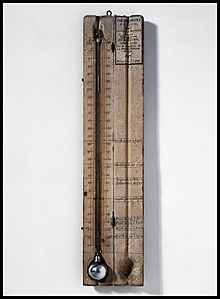Temperature and Pressure Measurements
Numerous types of temperature and pressure measurements are used throughout the thermodynamics. The operators should recognize the various types and their interrelationships in order to understand the thermodynamics.

Attempt of standardized temperature measurement have been report as early as 170 AD by Claudius Galenus. The modern scientific field has its birth in the works by Florentine scientists in the year 17th century. The early devices to measure temperature were termed as thermoscopes. The first sealed thermometer was built in 1641 by the Grand Duke of Toscani, Ferdinand II. The development of nowadays thermometers and temperature scales started in the early 18th century, when Gabriel Fahrenheit accepted a thermometer by using mercury and a scale both introduced by Ole Christensen Romer. Fahrenheit's scale is yet in use, beside the Celsius scale and the Kelvin scale.
Many techniques have been developed for measuring the temperature. Some of them involve Gas thermometer, Thermocouples, Thermistors, Pyrometer, Resistance temperature detector and many other thermometers.
Many methods have been developed for the measurement of pressure. Tools used to measure pressure are termed as pressure gauges or vacuum gauges.
The manometer could also refer to a pressure measuring instrument, generally limited to measuring pressures close to atmospheric. The word manometer is frequently used to term specifically to liquid column hydrostatic tools.
The vacuum gauge is used to measure the pressure in a vacuum-that is further divided into two categories, high and low vacuum (and at times ultra-high vacuum). The applicable pressure range of most of the methods used to measure vacuums has an overlap. Therefore, by combining numerous different kinds of gauge, it is possible to measure system pressure constantly from 10 mbar down to 10-11 mbar.